Design Tasmania
Corner of Brisbane and Tamar streets
Launceston, 7250
Tasmania
info@designtasmania.com.au
+61 3 6331 5506

Melbourne Design Fair: PRESENT
16th March - 20th March 2022
Curated by Michelle Boyde.
PRESENT: Melbourne Design Fair 2022
Featuring works by Laura McCusker, Brodie Neill, Scott Van Tuil, Lillian Wheatley, Belinda Winkler and Jane Bamford.
The Melbourne Design Fair showcase has been developed by Tasmanian-based freelance designer and curator Michelle Boyde and presents a range of naturally resourceful Tasmanian designer-makers whose practice embodies a living relationship with their craft and our island’s beautiful materials.
‘Our designers have a reverence that comes with knowing how slowly their materials grow or form. They live, or have lived in Tasmania, where creative people are inextricably linked with the natural world. In considering Melbourne Design Week’s theme this year of ‘making good’ - there’s a sense that these designers see the local materials they work with as innately good before it's taken into their hands to be transformed. People who buy their work become custodians of this ‘goodness’ – inviting the work to be part of their spaces and lives, respecting its form and function, hopefully entering into a contract to give them long lives.' – Michelle Boyde
Image credit: Michelle Boyde, At Melbourne Design Fair; Photography by Sean Fennessy
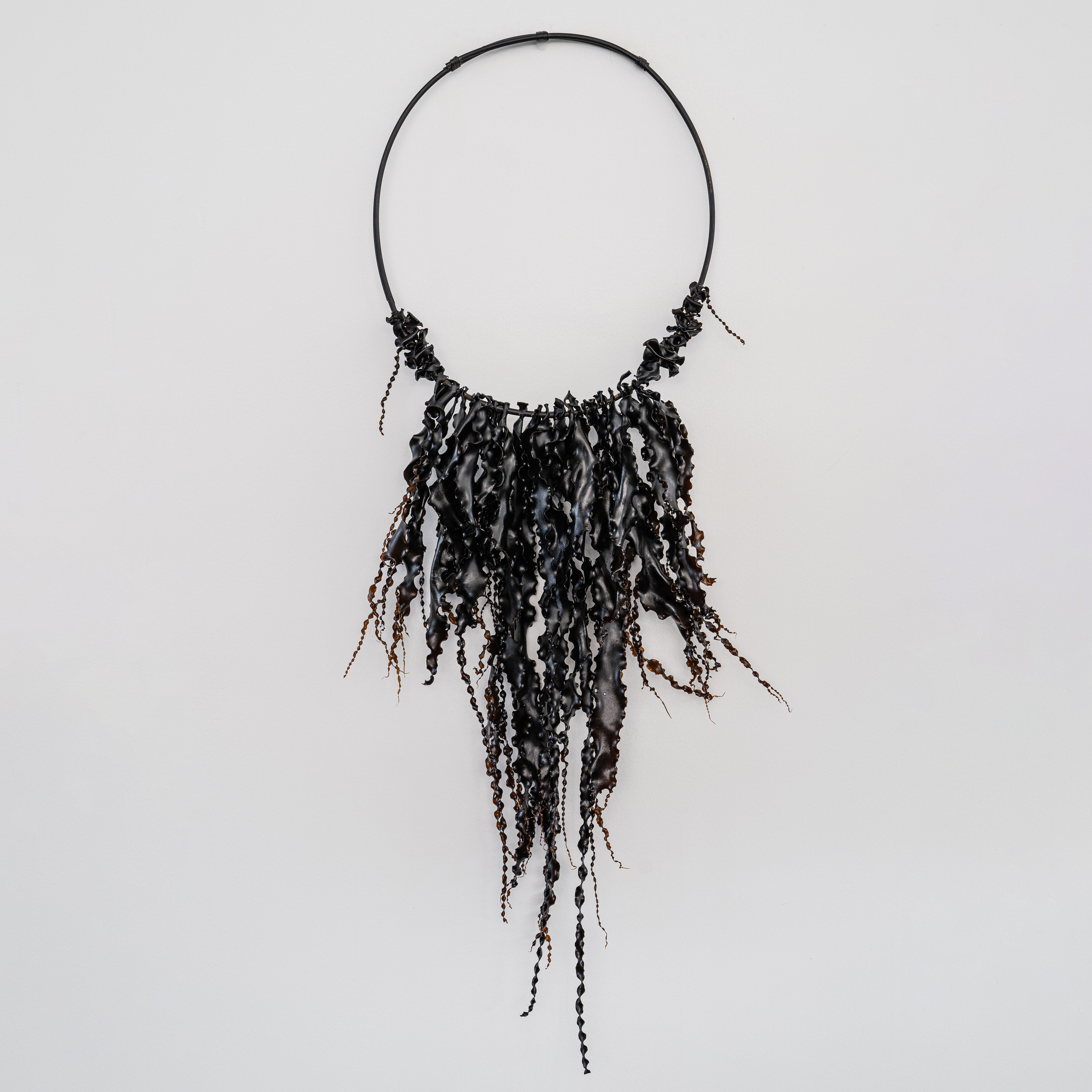
Lillian Wheatley, rikawa (kelp); photo by Joe Chelko.
rikawa (kelp) + river reed
Lillian Wheatley
Rikawa (kelp) was traditionally used to make water carriers, and river reed, basketry by Tasmania’s old people.
Learning from her aunties the traditional ways of weaving, Rikawa and River Reed explore contemporary expressions of these versatile mediums, sourced sustainably from Lillian’s traditional homelands in North East Tasmania. They are expressive of Lillian’s long relationship with these cultural materials, gathered and made on country.
Continuing the intergenerational transference of knowledge between Lillian and her daughter Nindarra Wheatley, river reed is a collaborative piece between ningi (mother) and niyanta (daughter).
Materials: rikawa (kelp), North East Tasmania; river reed, North East Tasmania.
Dimensions: 1500 x 700mm approx.
Lillian Wheatley
Lillian is a saltwater woman (muka luna) from the Trawlwoolway nation, North East Tasmania. She is a senior cultural practitioner, knowledge keeper, artist/designer and respected Elder in her community.
Lillian’s work is inspired by her country and life growing up on an island in the Bass Strait. This was the very island her ancestors were subjected to enforced displacement from their homelands. They were forbidden to practice their cultural ways as attempted genocide of her ancestors continued. Today, Lillian’s people are continuing the cultural practices that were taken from her old people.
Lillian’s life growing up on an island has instilled a deep respect for country, for her peoples livelihoods depending on the tide, seasons, moon, wind, just as the original custodians of this land did. As a young child Lillian would gather cuttlefish, kelp, shells, driftwood, treasures washed up from the sea and topaz washed down from the mountains. This childhood pastime grew into a way of life for her.
The influences of her cultural upbringing inspire her to create her pieces. Today when she gathers traditional materials to create her work, she is honouring her people, culture and customs by continuing the thriving, living ancient practices. Her connection and love of her island home and ancestral lands resonate in the exquisite pieces she creates both contemporary and traditional.
Designer Profile
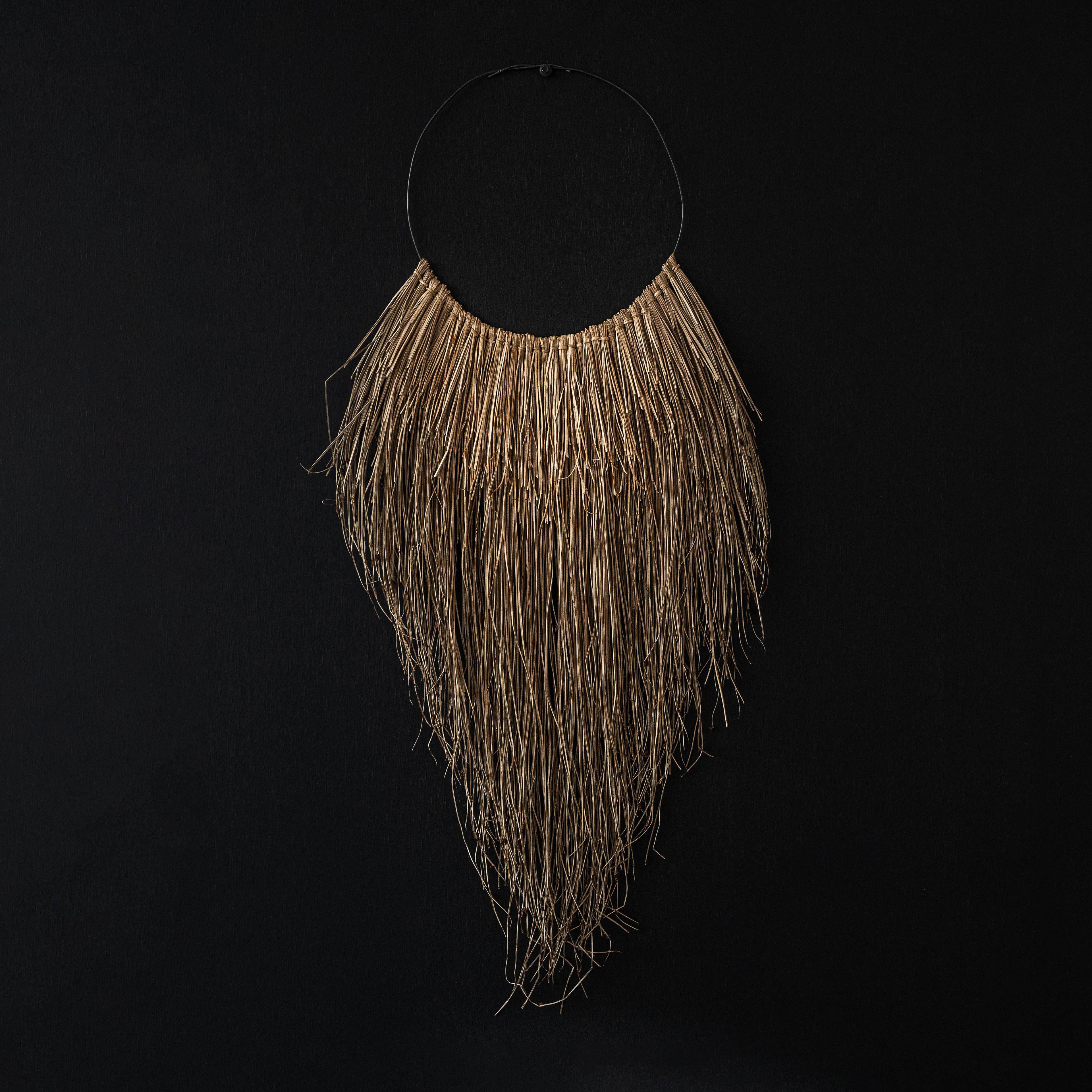
Lillian Wheatley, river reed; photo by Joe Chelko.

Lillian Wheatley, rikawa; photo by Dean Lever
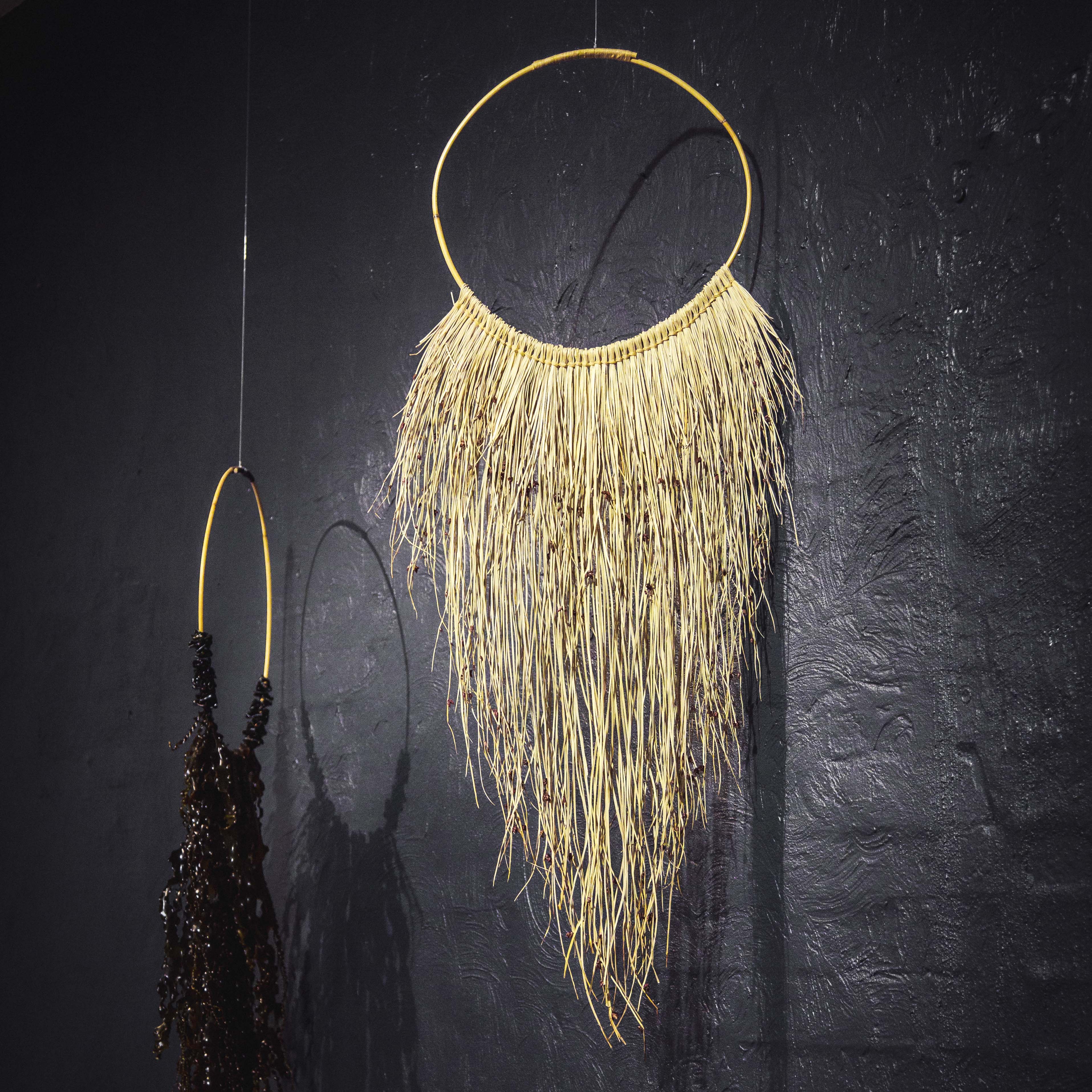
Lillian Wheatley, river reed; photo by Dean Lever
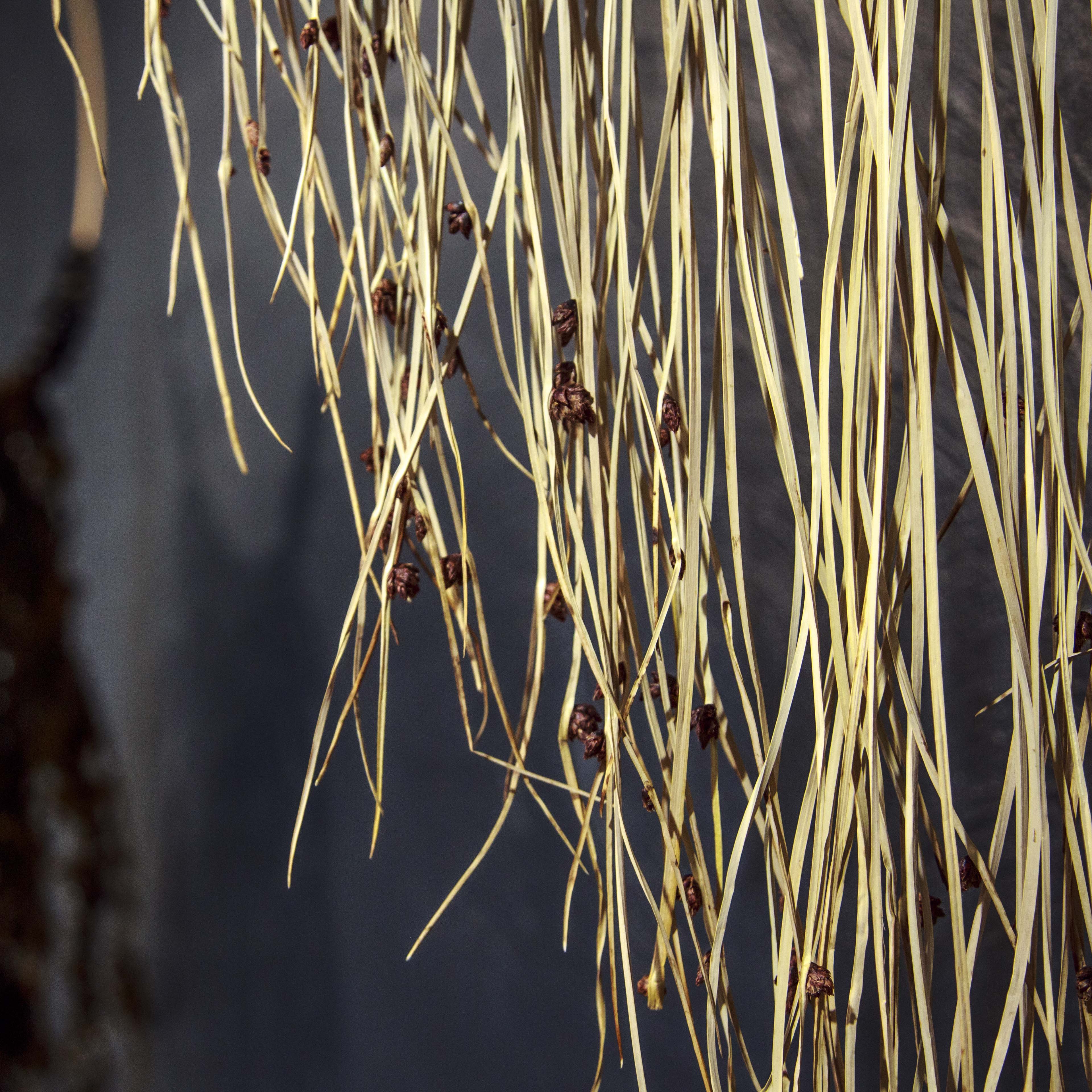
Lillian Wheatley, river reed; Photo Dean Lever
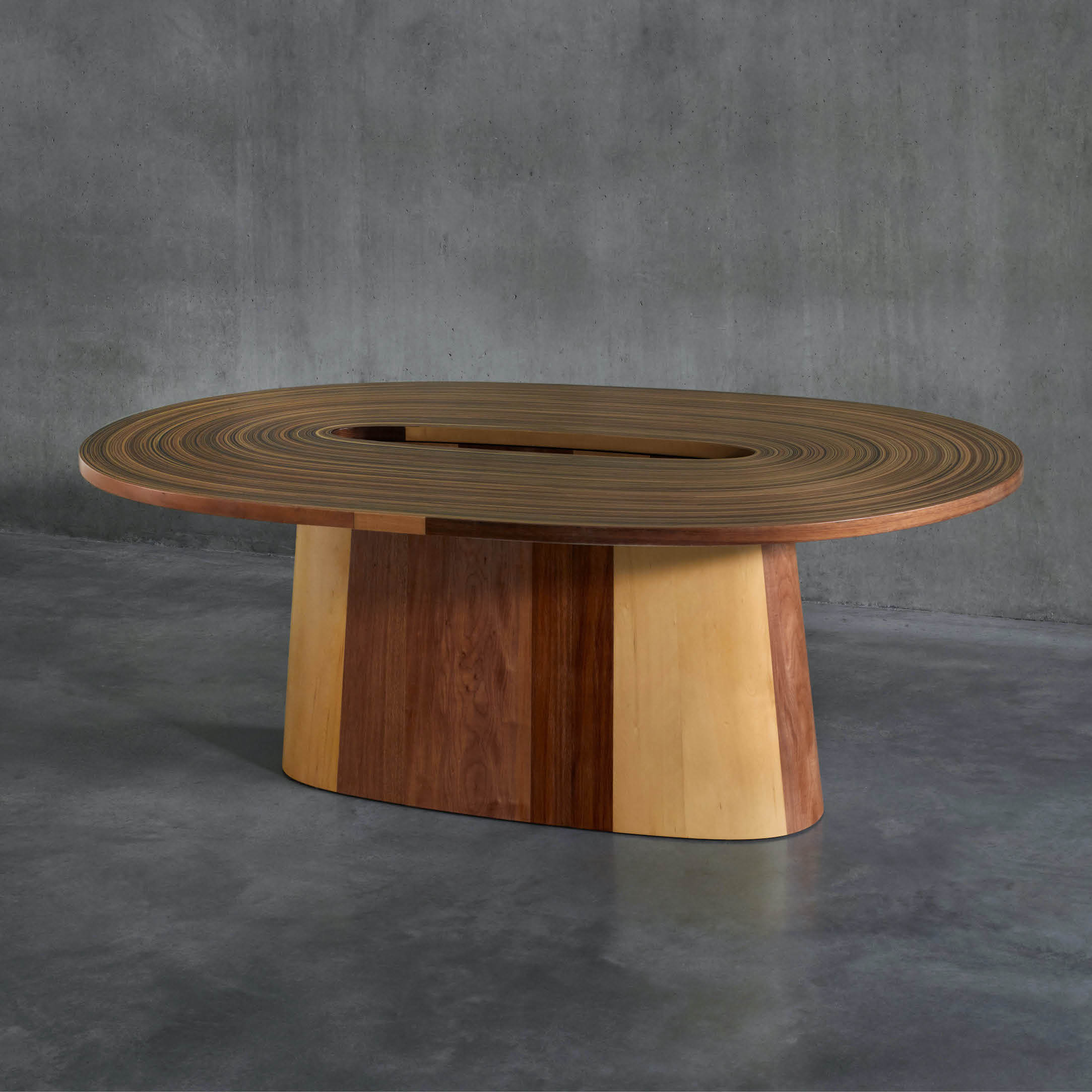
Brodie Neil, ReCoil; Photography by Angela Moore
ReCoil
Brodie Neill
ReCoil is an elliptical centrepiece dining table. It is made entirely of precious, reclaimed Hydrowood timber veneer offcuts, with six native Tasmanian tree species featured. These include Huon Pine, Tasmanian Oak, Celery Top Pine, Sassafras, Myrtle and Blackwood. The veneers are meticulously coiled by hand in outward spirals, referencing the trees’ annual growth rings.
The effect is a spectrum of wood tones, from honey to burnt umber. The honey-coloured wood, Huon Pine is the most rare and treasured of all Tasmanian timbers, and the burnt umber is Tasmanian Oak. The actual colour combinations and sequence of the veneers is randomised into a blueprint consisting of all the species and their many lengths of scraps. The resulting combinations of the veneers mesmerise, demanding attention. The various timbers release unique oils and of particular notice is the scented Huon Pine. The tabletop has been CNC-trimmed smooth, flush cut. The surface is polished, finished with resin and the table stem is made of larger pieces of veneer.
The impact of ReCoil comes from its refined, innovative process and positive message.
Materials: Huon pine, Tasmanian Oak, Celery Top Pine, Sassafras, Myrtle and Blackwood
Dimensions: 2200 x 1400 x 780mm
POA
ReCoil
Brodie Neill
Born and raised in Hobart, Tasmania, Brodie Neill studied Furniture Design at the Tasmanian School of Art before completing his Master’s at the Rhode Island School of Design (US). In 2005 Neill setup his London studio where his work covers limited editions as well as production pieces for his self- produced brand Made in Ratio. In 2016, Neill represented Australia at the inaugural London Design Biennale with a critically acclaimed installation Plastic Effects, where he launched the now iconic Gyro table.
Neill is known for his mastery of materials, form, and process. He crafts inventive, resourceful, beautiful contemporary design works. Brodie Neill recontextualises and transforms not only virgin materials, but the forgotten, the waste, the discarded, into mesmerizingly beautiful, refined designs. All of this with a strong message that is elegantly contained in each piece. They embody care, environment, origin, and lifecycle. Eminently collectable, Brodie Neill designs can be found in galleries and museums, as well as the home, particularly with Made in Ratio.
ReCoil, his elliptical centrepiece table was first presented by Design Tasmania for London Craft Week 2021, in partnership with Hydrowood, Lark Distillery, the Tasmanian Government and UK/Australia Season.
Designer Profile
Website
Made In Ratio

Brodie Neill; photography by Mark Cocksedge

ReCoil Studio Progress; photography Mark Cocksedge.

ReCoil Studio Progress; photography Mark Cocksedge.

ReCoil Studio Progress; photography Mark Cocksedge.

Lake Pieman; photography by Samual Shelley

ReCoil Studio Progress; photography Mark Cocksedge

ReCoil; photography Mark Cocksedge
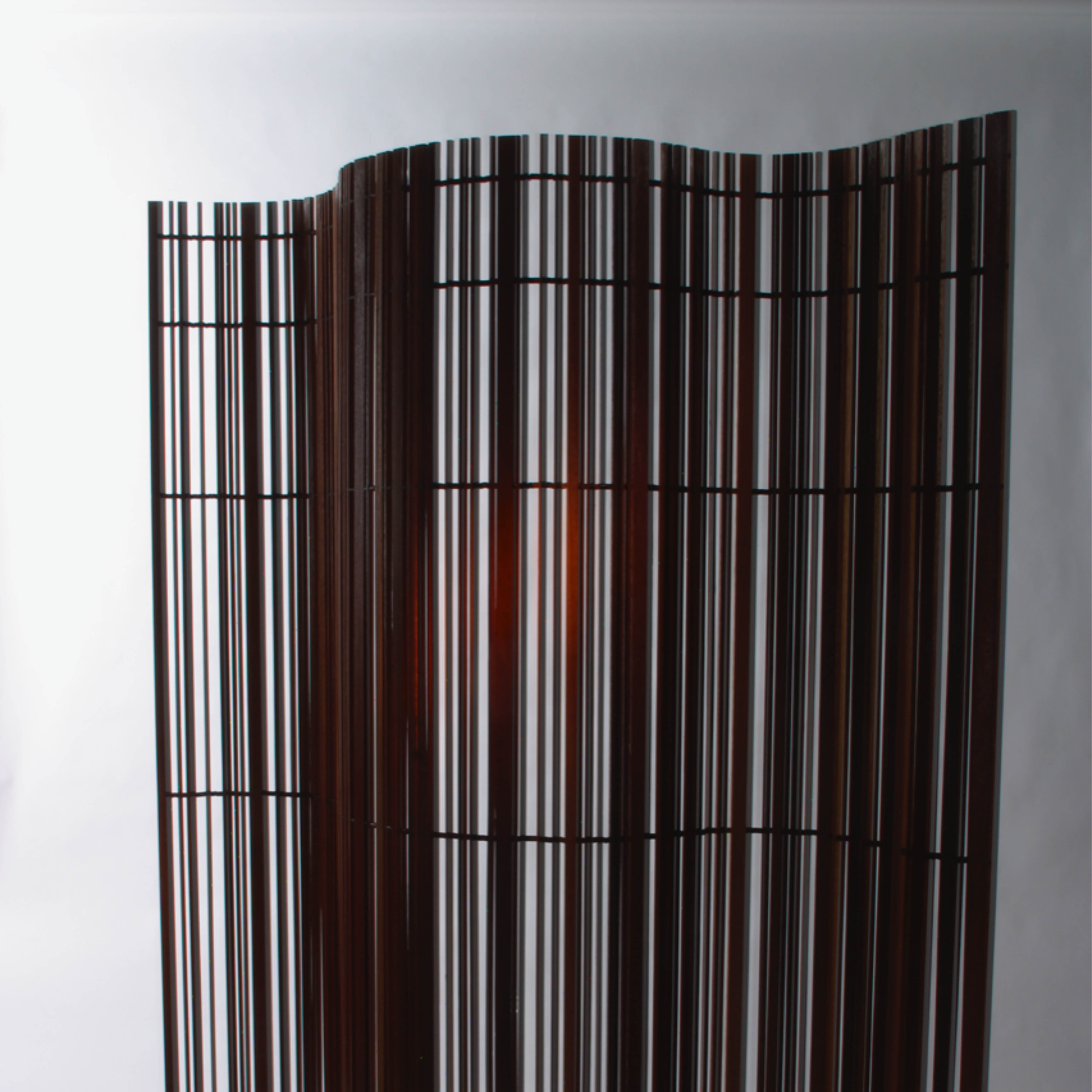
Laura McCusker, Barcode Screen; Photography by Peter Whyte Photography
Barcode Screen
Laura McCusker
First designed, prototyped, refined, remade and exhibited in 2000, Barcode Screen was intended as a piece that was both sculptural and functional. Revisiting this design more than 20 years later, McCusker says is like seeing an old friend again and remembering why you liked them in the first place.
Barcode takes as its inspiration something that has become so commonplace as to be almost invisible. Through manipulation of scale, a beauty that otherwise would go unnoticed is made apparent.
Useful in a myriad of contexts, the malleable footprint and random assembly of positive and negative throws light and shade with dynamism.
McCusker aims to design objects that are appealing on a number of different levels; pieces that are enjoyable to use and relate to, pieces that have a story and provenance. They need to be beautiful, functional, and perform the task for which they were designed, well.
The Barcode screen reflects this philosophy.
Materials: Tasmanian Oak
Dimensions: 2100 x 2400mm with a variable footprint
Laura McCusker
Laura McCusker (b. 1975 Sydney)has been designing and making furniture for over 25 years, creating functional pieces from honest materials.
After founding her business in Sydney, she settled in Tasmania, working from a 110-year-old former apple-packing shed beside the New Town Rivulet. Inspired by her adopted island’s natural beauty and quiet simplicity, she makes work that is sympathetic to its surroundings, letting the timber speak for itself.
With a deep respect for materials, she favours the five species known collectively as Tasmanian Oak, crafting them into bespoke furniture, custom joinery, and functional art. Her work features at Mona, the Tasmanian Museum and Art Gallery, Spring Bay Mill, and in private domestic settings nationally.
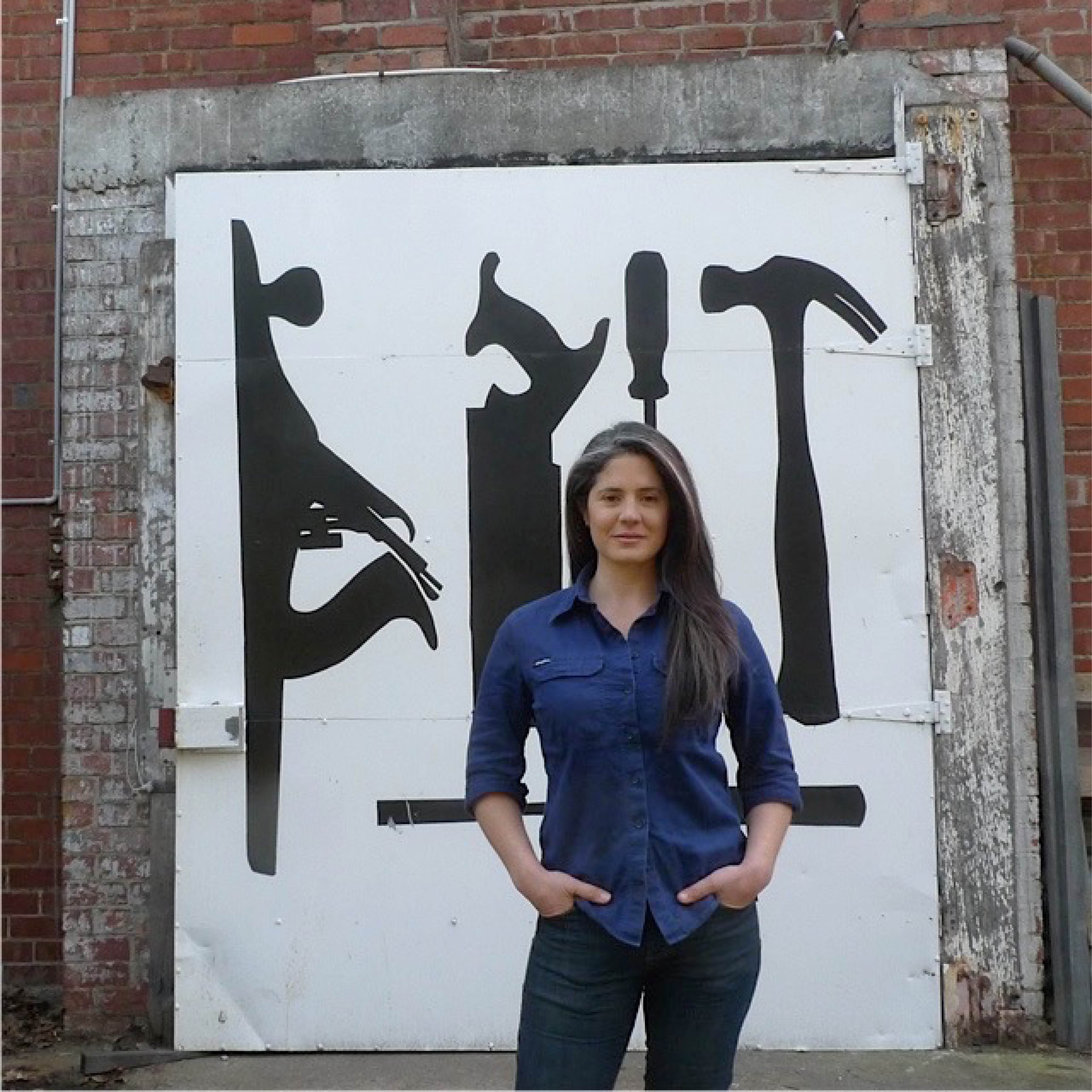
Image credit: courtesy of Laura McCusker.

Image credit: courtesy of Laura McCusker.
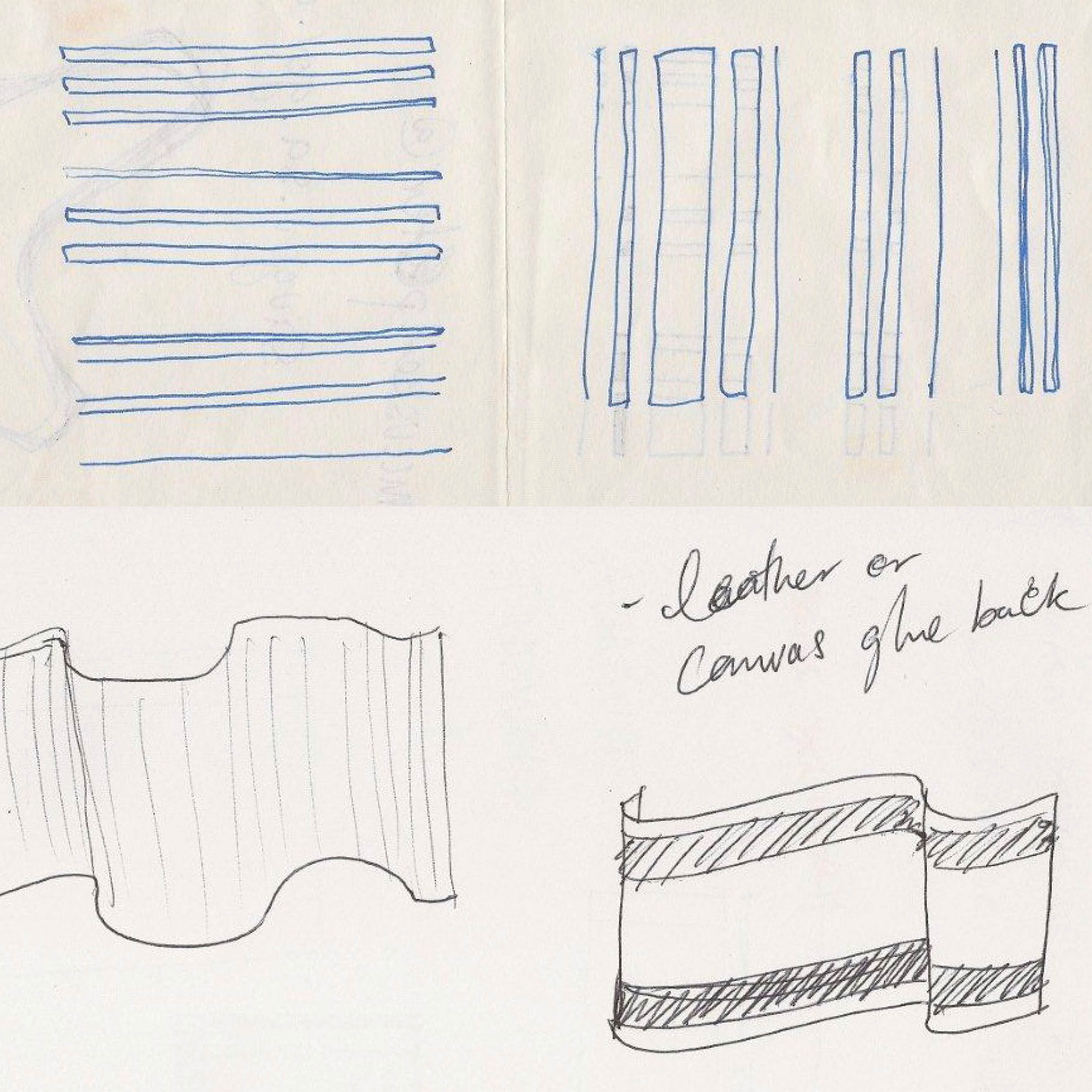
Image credit: courtesy of Laura McCusker.
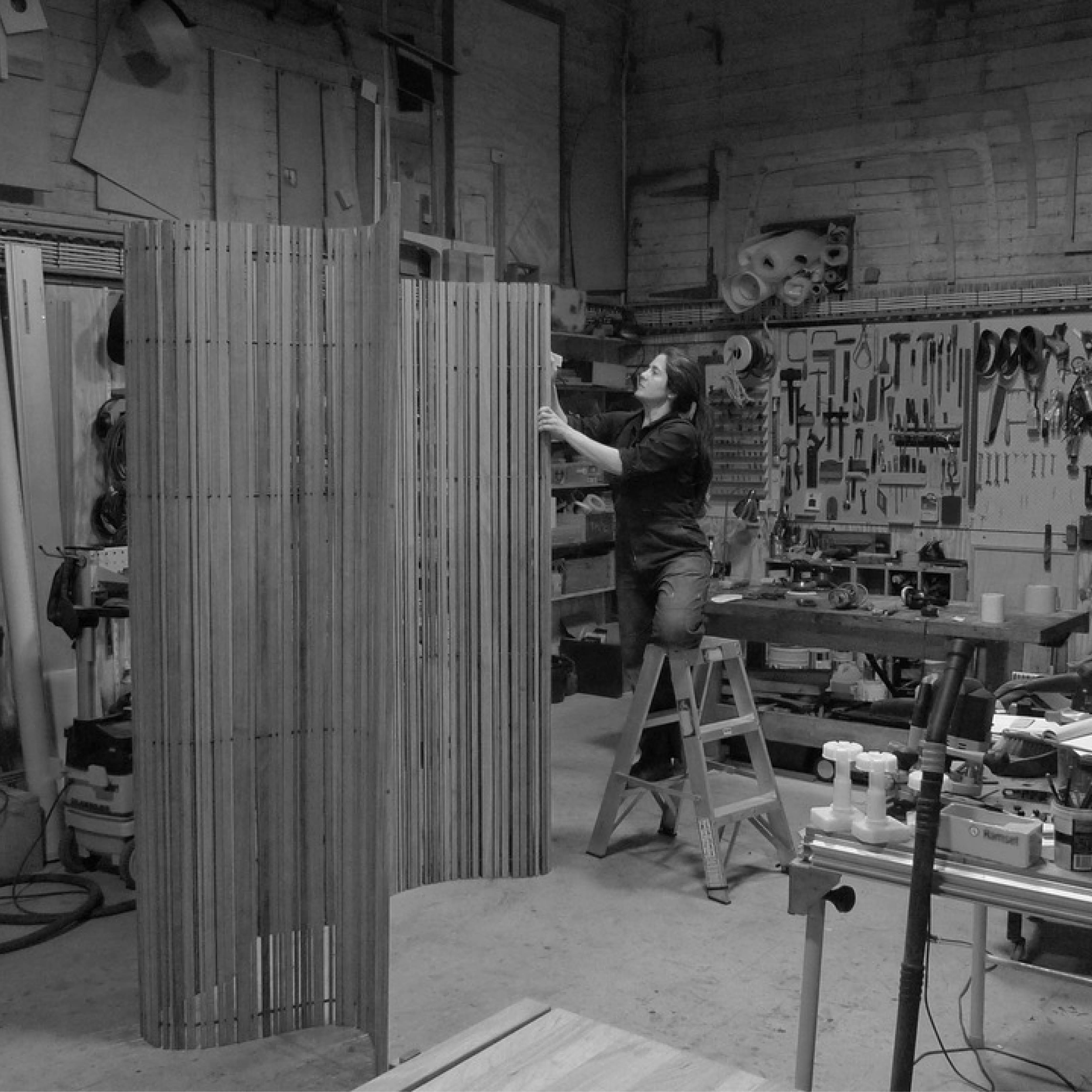
Image credit: courtesy of Laura McCusker.
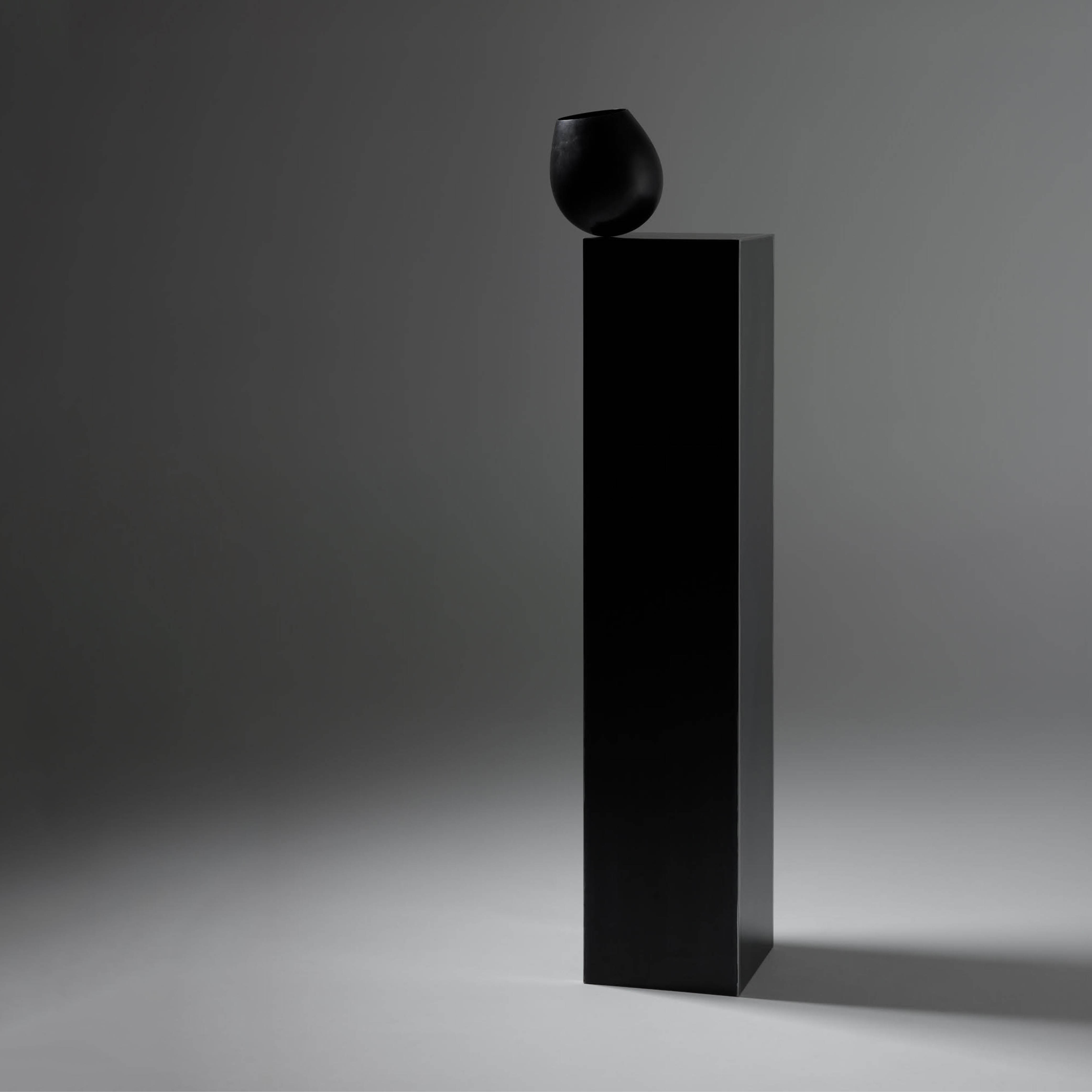
Belinda Winkler, Brink #4; Photography by Peter Whyte Photography
Brink #4
Belinda Winkler
Balanced on the brink, a bronze vessel form leans out into the void.
Exploring the physical and perceptual aspects of the tension of this point of balance, this work responds to the vulnerability of our fragile Tasmanian environment.
Charged with anticipation, Brink #4 creates a space of tension where gravity and precarious balance find a tentative equilibrium.
Materials: Bronze and Steel.
Dimensions: 1650 x 300 x 300mm
Belinda Winkler
Winkler was born and raised in Tasmania and has had a lifetime of involvement with the Tasmanian landscape. Bushwalking with her family from childhood, Winkler developed an intimate connection with and a depth of understanding of the beautiful and fragile Tasmanian alpine environment. Sea kayaking has brought another level of connection to the Tasmania landscape, particularly is rivers, lakes, and costal environments.
As an artist and designer, Winkler’s practice spans ceramics, sculpture, public art and design. At the heart of her practice is the poetic notion of a sense of life within form. This notion rests on two assumptions; firstly, that curves projecting tension and energy are difficult to view with detachment. Such curves invite associations beyond the visual and the intellectual. They are evocative, and thus have the potential to generate connections, sensually, emotionally, and imaginatively — they tempt touch, be that with the eyes, the hands, the memory, or the imagination. The second assumption is that that the tactile dimension of these works is deeply implicated in these connections.
Winkler completed a PhD focussing on Reflective, Practice-based Research through RMIT University’s School of Architecture and Design in 2014, having previously received a Bachelor of Fine Arts with First Class Honours at the University of Tasmania and the Australian Postgraduate Award in 2006 and a Bachelor of Education in 1986. Winkler has created works for numerous public art commissions and her sculptures and designed objects have been widely exhibited in solo and group exhibitions locally and nationally and are included in numerous public and private collections.
Designer Profile
Website
Belinda is represented by Bett Gallery
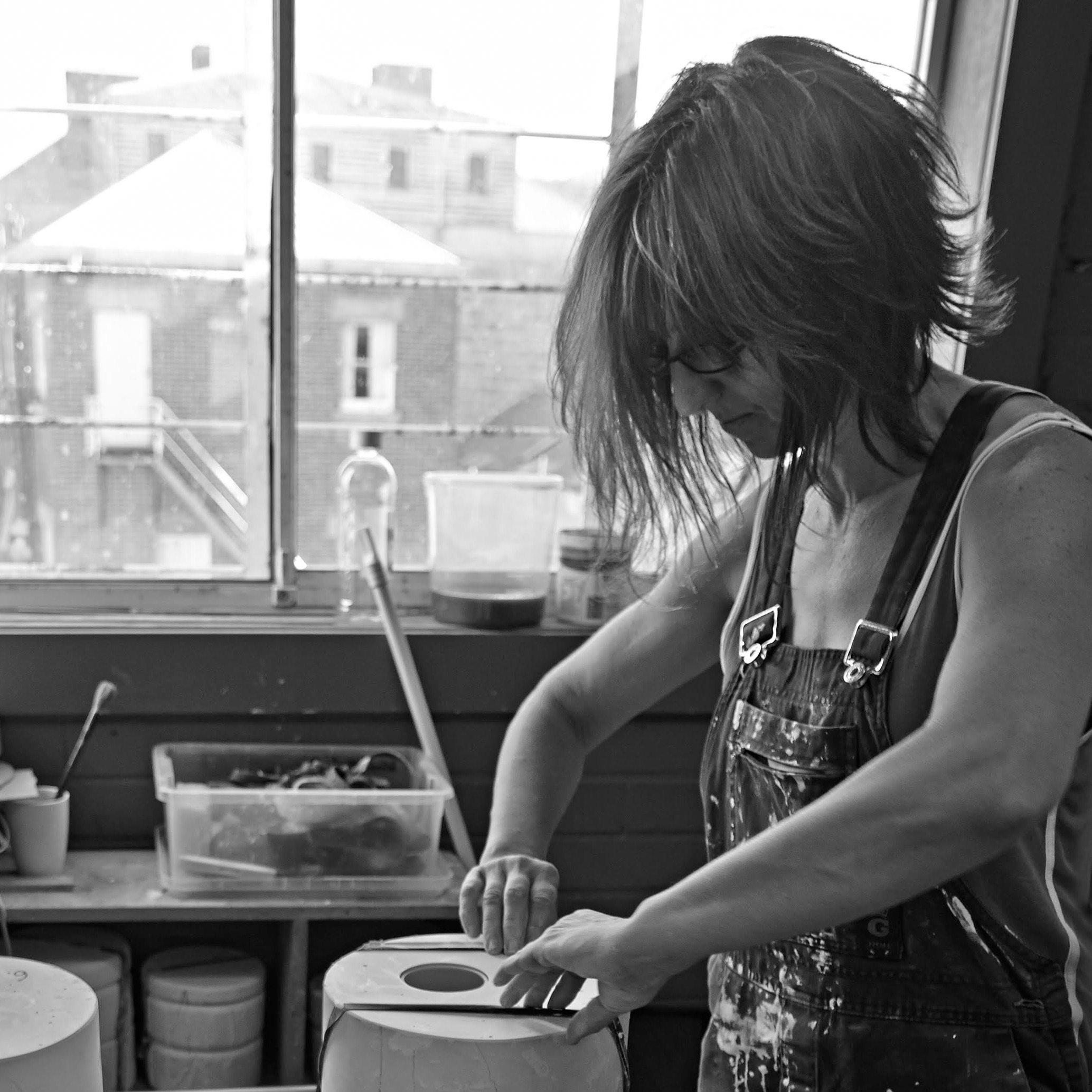
Belinda Winkler; photography by Peter Whyte Photography
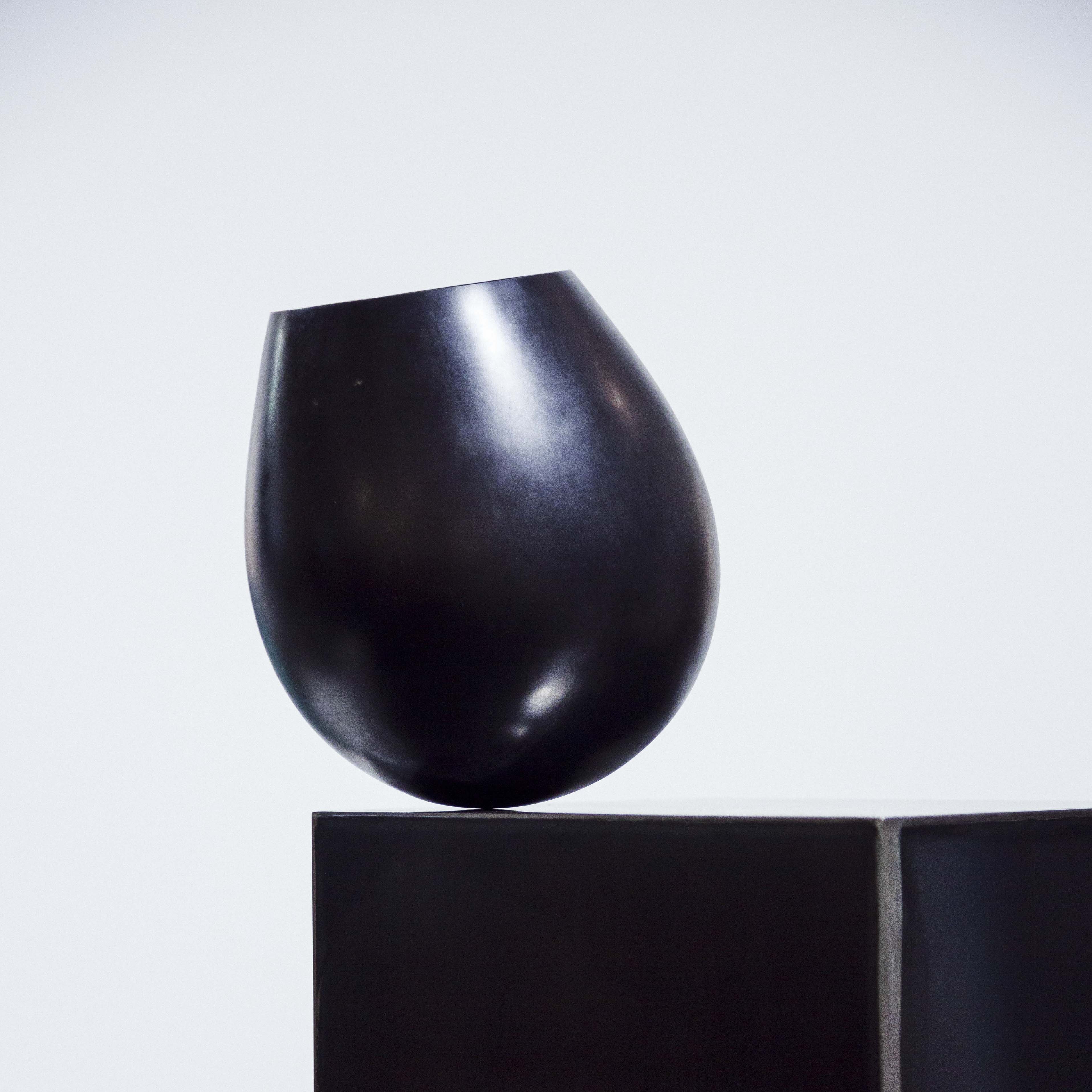
Belinda Winkler, Brink #4; photo by Dean Lever
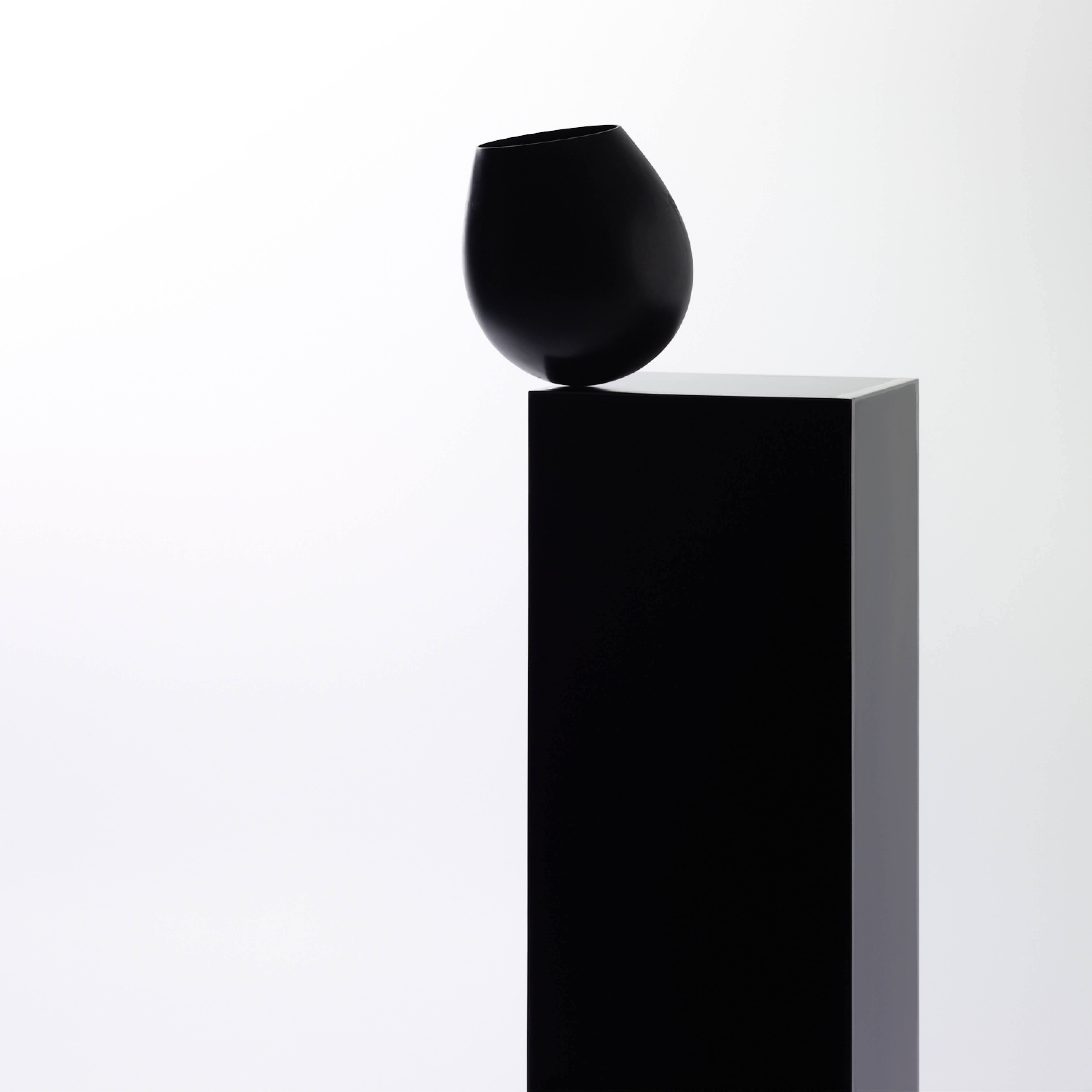
Belinda Winkler, Brink #4; photo by Peter Whyte Photography
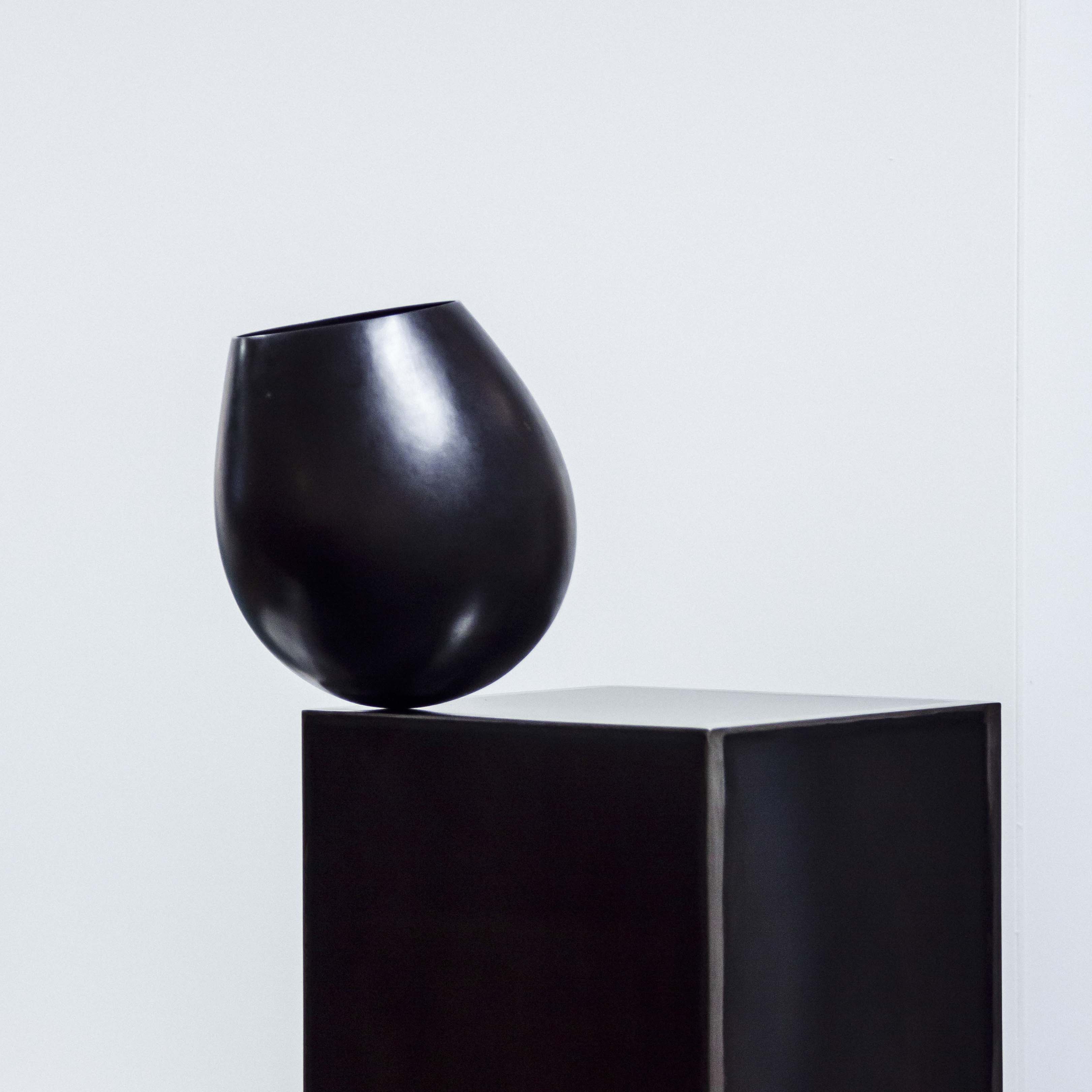
Belinda Winkler, Brink #4; photo by Dean Lever
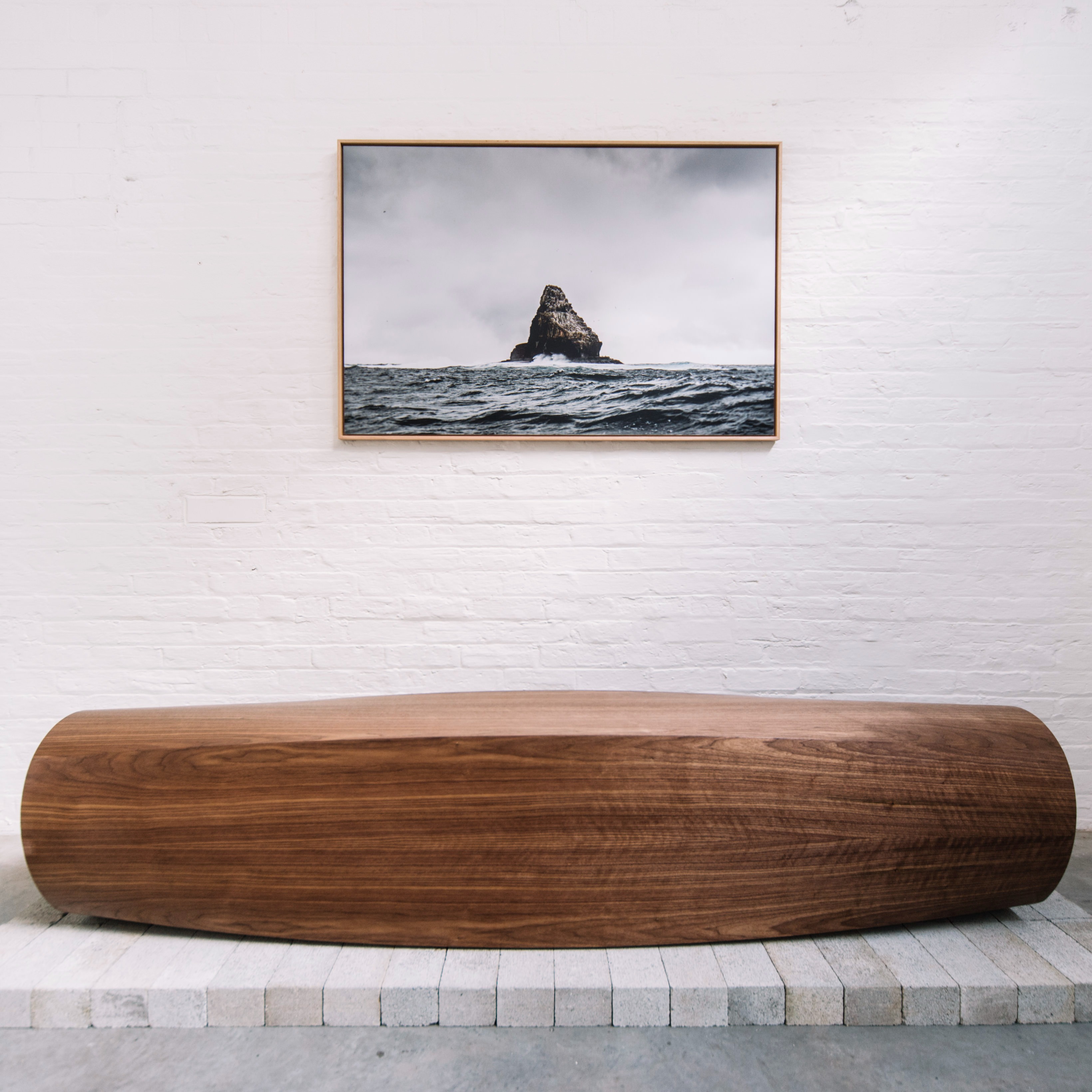
Scott Van Tuil, LOFT Bench: Photography by Jonathan Wherrett.
LOFT Bench
Scott Van Tuil
Launched in 2016, the LOFT collection derives it’s name from the drafting technique used to generate sweeping curves from points on a grid.
The form speaks to the place and setting it originates from. Tasmania is an island renowned
for its connection with the sea, it’s unique timbers, and it’s ship-building heritage; from the traditional to high performance.
The four shells of a LOFT Bench are brought together to create a monocoque structure - an extremely strong structure that derives its
strength from the geometry of it’s external skin. A visual lightness is achieved by avoiding the need
for any internal structure
Materials: Australian FSC Hoop Pine Plywood, Tasmanian Blackwood.
Dimensions: 450 x 450 x 2200mm
From the LOFT series; Scott Van Tuil's LOFT Lounge is part of the Design Tasmania Wood Collection.
LOFT Lounge
Scott van Tuil
VAN TUIL Design Studio was established by Scott van Tuil upon graduating from the University of Tasmania, with a Bachelor of Environmental Design. Working across a diversity of modes, materials and scales, the desire is always to create objects that are beautiful in form and function, and meaningfully contribute to the spaces they inhabit. Located in Hobart, Tasmania, this small island at the edge of the world continues to inspire and influence.
Designer Profile
Website

Scott Van Tuil; photography by Jonathan Wherrett.
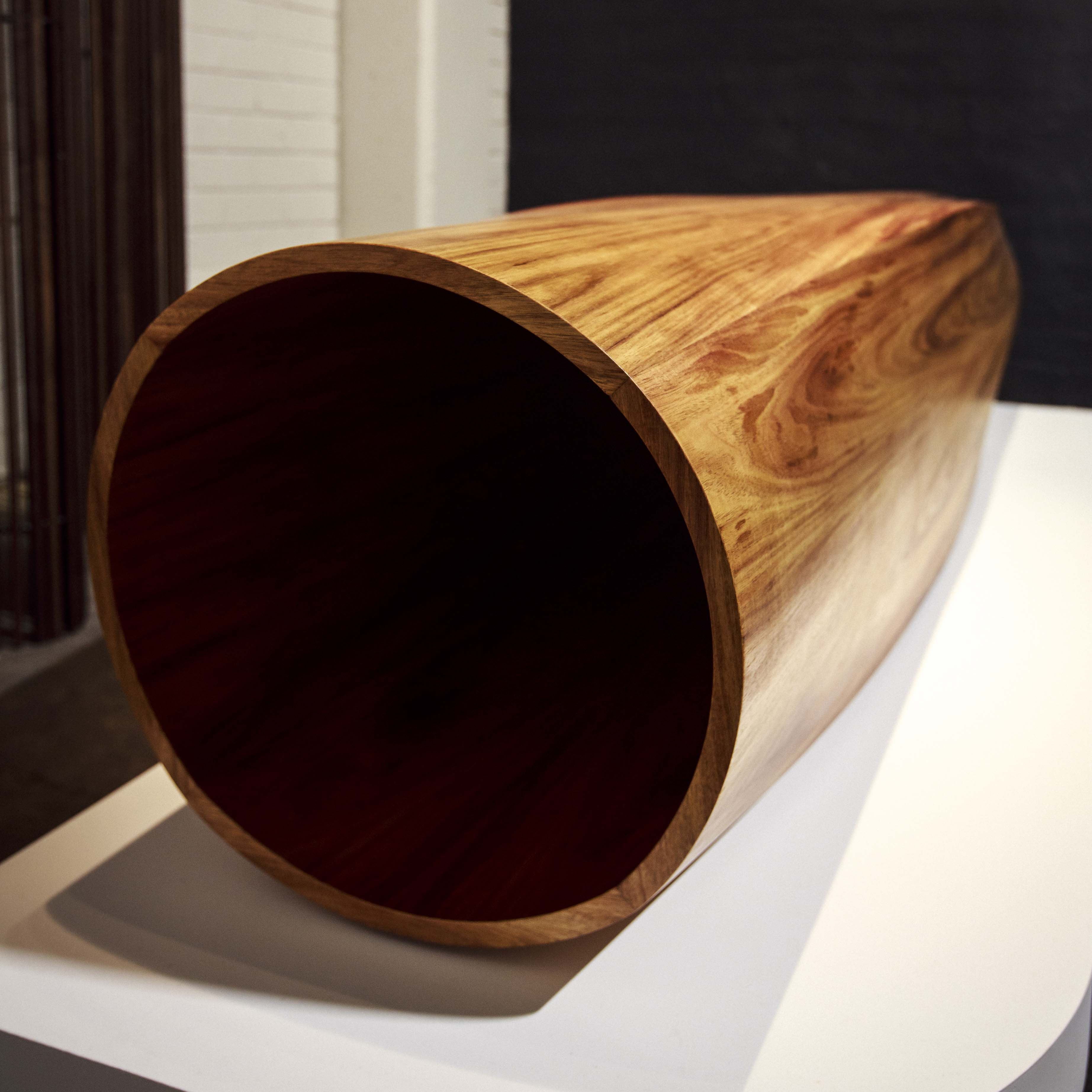
Scott van Tuil, LOFT Bench; photo by Dean Lever
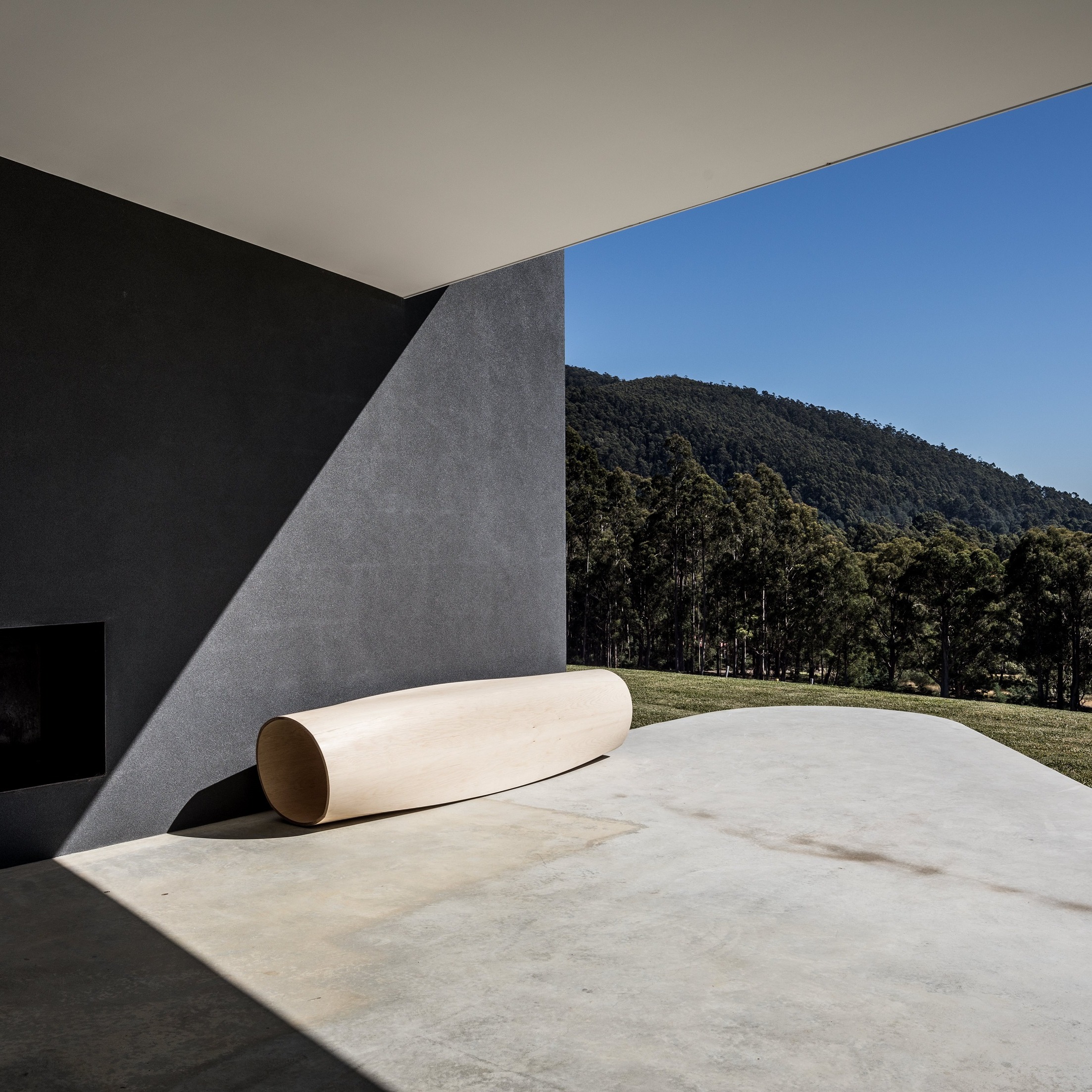
Scott van Tuil, LOFT Bench; photo by Adam Gibson
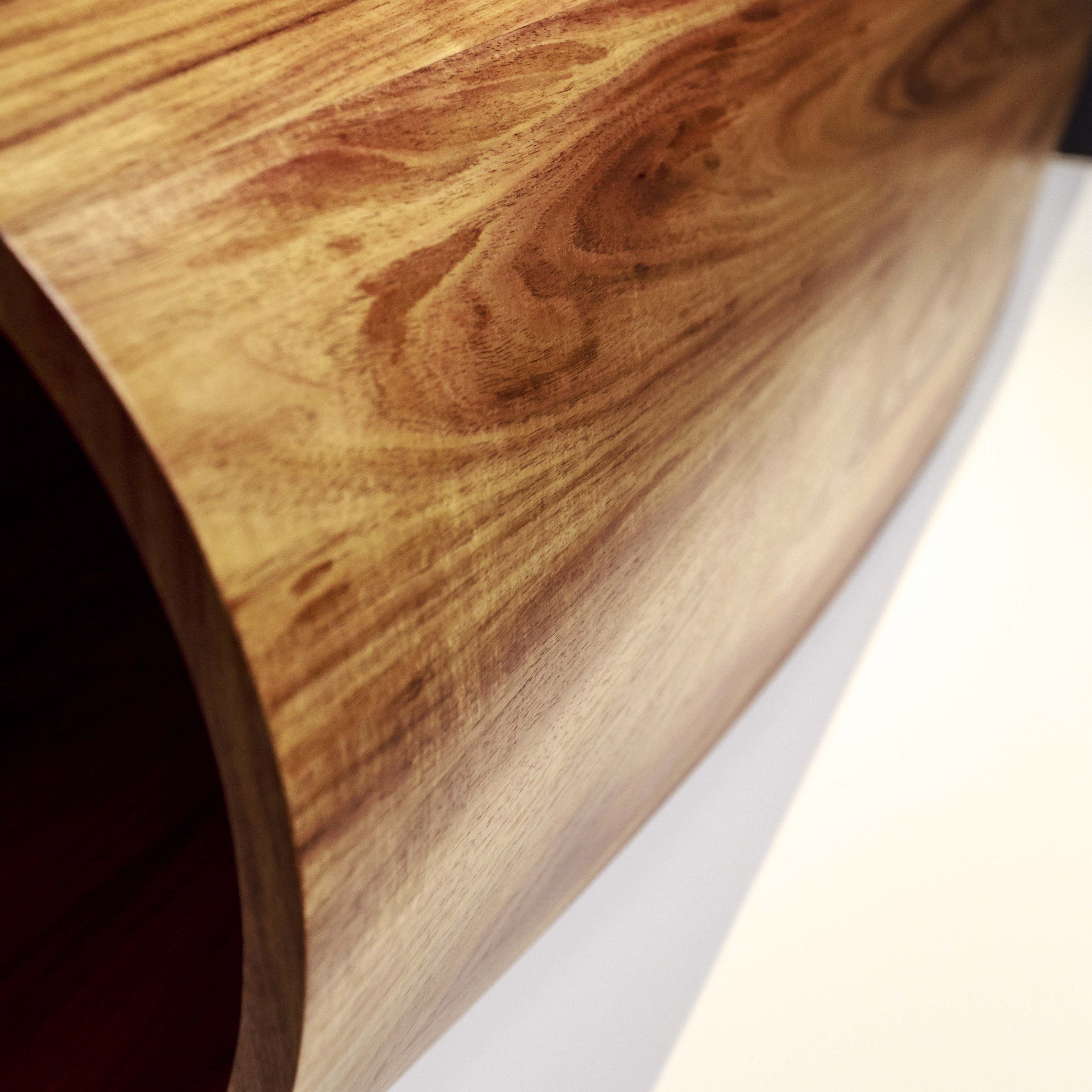
Scott van Tuil, LOFT Bench; photo by Dean Lever

Jane Bamford, Tall Derwent River Ascidian Bottle; photography by Peter Whyte Photography.
Derwent River Ascidian Bottles
Jane Bamford
Jane Bamford’s work is focused on local Tasmanian marine concerns and investigations sustained by her own observations, scientific papers and research. Bamford working with Dr Tim Lynch, senior research scientist at CSIRO, the Derwent River Ascidian Bottles were designed to create artificial Spotted Handfish spawning habitats. These extraordinarily beautiful marine invertebrates have been depleted by many factors including the introduction of the invasive Northern Pacific Seastar into the Derwent River.
In some Spotted Handfish sites boat moorings exist where divers found old glass bottles lobbed overboard by yachties. These glass bottles grew algae and had slowly became habitat. Bamford, conscious that she had been making clay ASH to replace ascidian habitat, the natural habitat, began thinking of glass and clay bottles and these essential materials in contrast to polluting plastics.
Having the glass bottles in her studio, Bamford began to marry these two stories; of bottles and ascidian habitat loss together into this handbuilt work, formed by sculpting small ascidian crowns and coiling porcelain one by one into bottles.
This work embodies a new dialogue on habitat loss and marine extinctions and the use of natural materials in offering hope and reaching out to the possibility of an important change in the cultural practice of our time.
Materials: Southern Ice Porcelain
Dimensions:
Tall: 320(h) x 110(w)mm
Small: 390(h) x 140(w)mm
One of two: 440(h) x 140(w)mm
Jane Bamford
Bamford began studying ceramics in Japan at To En Kai studio in 1993. She subsequently completed a BFA, majoring in Ceramics at the Tasmanian College of the Arts, Hobart and was awarded the Deans’ roll of excellence in 1995. Bamford was selected as an Associate at the Jam Factory Craft and Design Centre in Adelaide in 1997 and has since exhibited throughout Australia and internationally.
Bamford creates work over a range of ceramic processes including slab formed, hand built, slip cast and weaving. Her work is primarily informed from research and observation of the coastal, marine, and alpine landscapes of Tasmania. Her observation, connection to place and environmental awareness has led her to produce work on issues like climate change’s impact on Tasmanian marine environments and the creation of Spotted Handfish spawning habitat in collaboration with CSIRO.
Bamford has actively pursued art/science collaborative projects, including collaborating with little penguin ecologists in both Tasmania and South Australia and has developed links to philanthropy in species support. She is currently an artist in residence at the University of Tasmania Centre for the Arts and Media creating ceramic work to be deployed in marine installations as part of a collaborative project to regenerate a series of native oyster reefs in South Australia.
Jane has become known for pioneering an arts practice around creating functional forms in species support which embody creative problem solving, functionality and compassion for the non-human world.
Designer Profile
Website
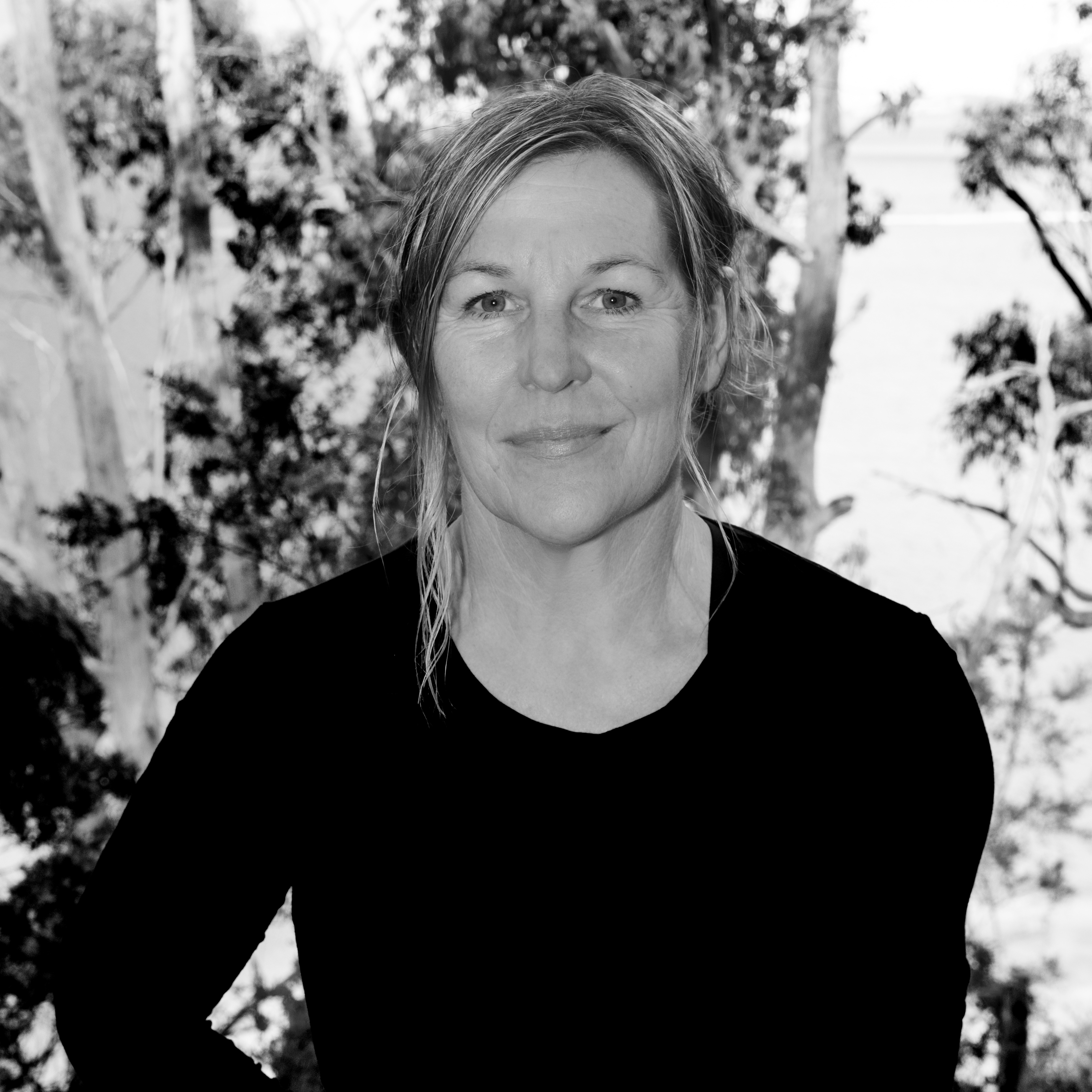
Jane Bamford, photo by Ivett Dodd
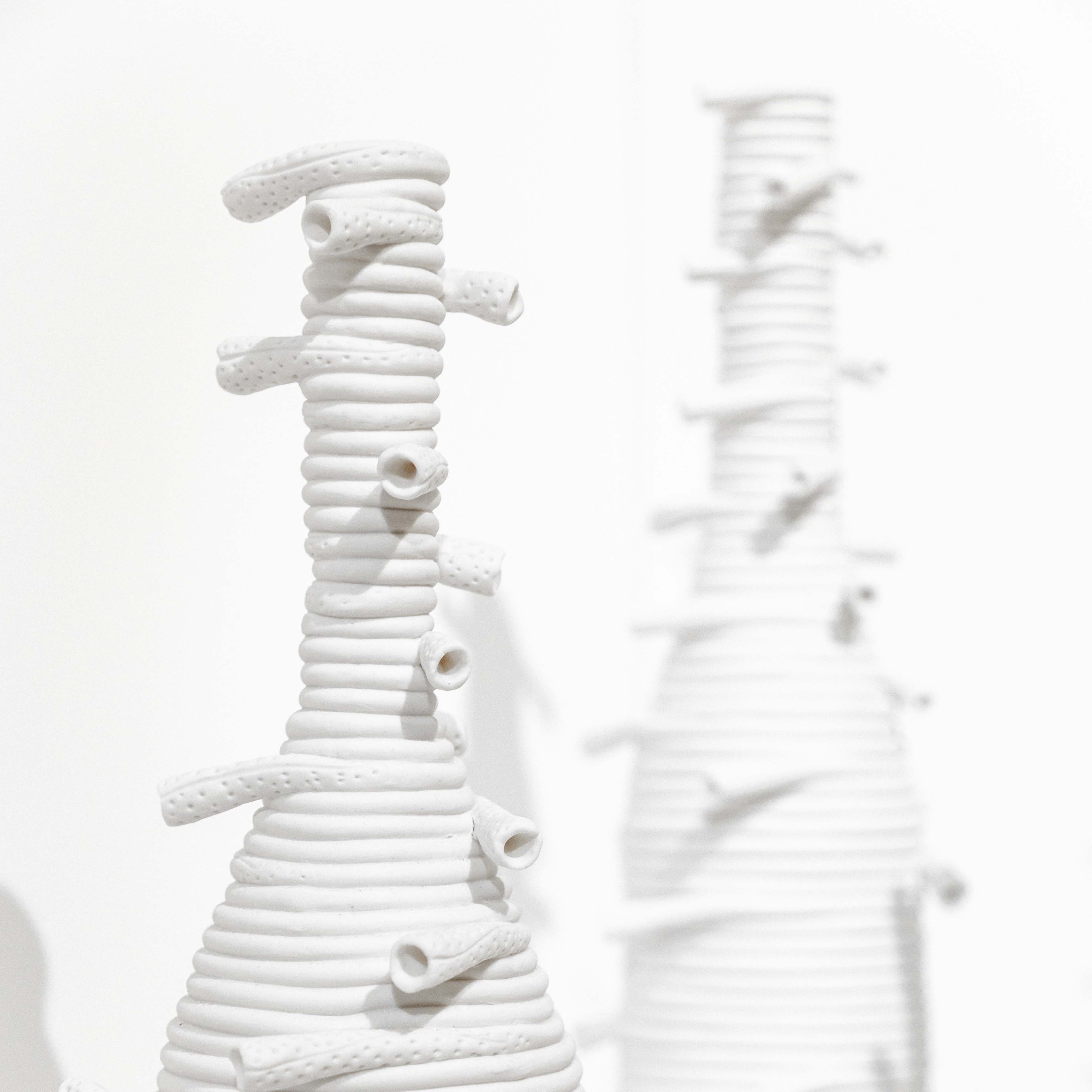
Jane Bamford, Derwent River Ascidian Bottles; photo by Dean Lever
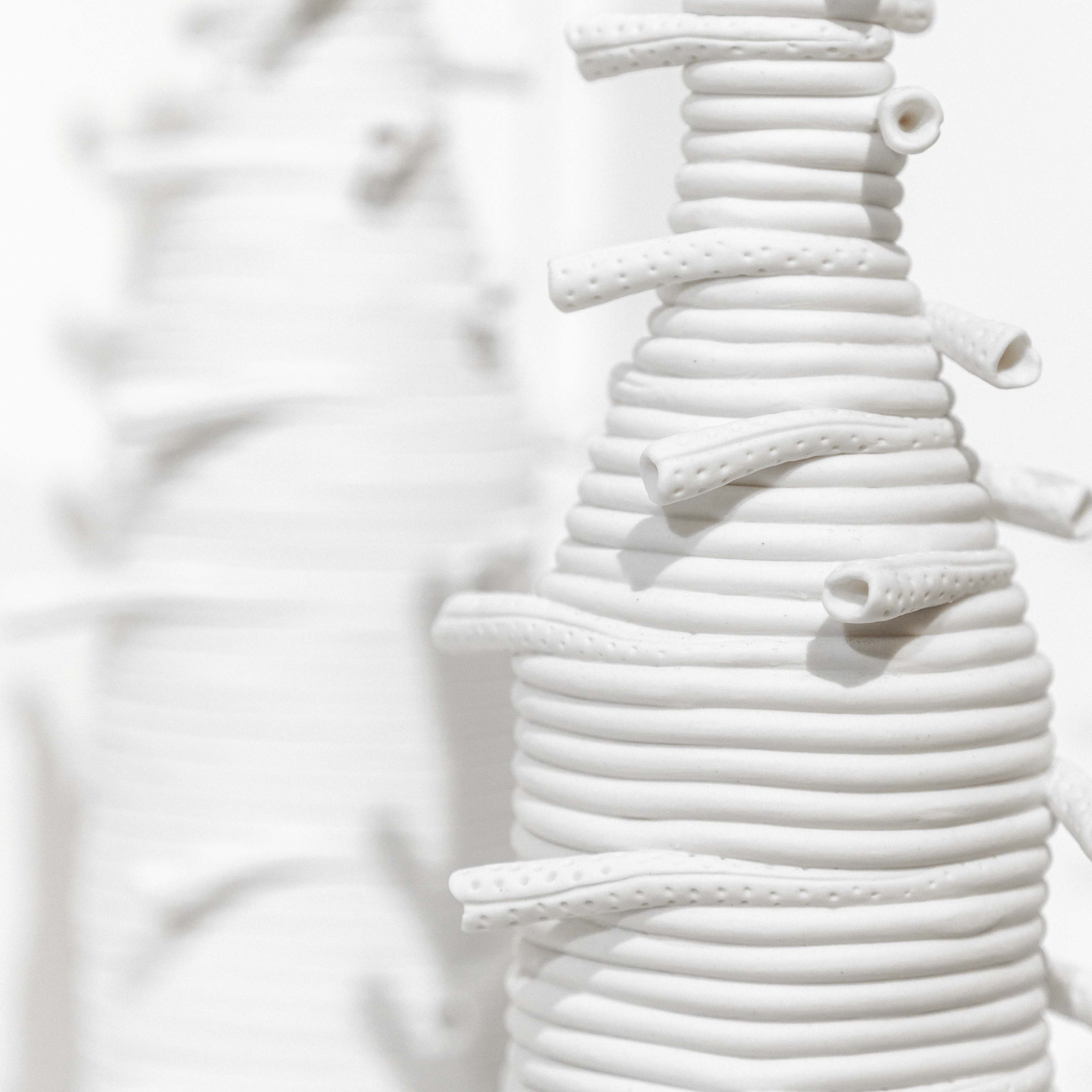
Jane Bamford, Derwent River Ascidian Bottles; photo by Dean Lever

Jane Bamford, Derwent River Ascidian Bottles; photo by Dean Lever
Curator's Statement: Michelle Boyde
Design Tasmania for Melbourne Design Fair’s ‘PRESENT’ exhibition brings together six Tasmanian designer-makers from across the island, whose work embodies a living relationship with our unique environment and its precious resources.
The six designers live, or have lived in Tasmania in sometimes remote places, inextricably linked to the natural world. The community-mindedness synonymous with the isolation of island living, together with this connection to the natural world, breeds a local culture of resourcefulness and skill-sharing across generations and industries. Whether drawing from age-old local traditions such as boat-building, or contributing to the re-establishment of wild marine habitat through ceramics, the 6 designers’ work exudes a reverence that comes with a deep understanding of place, and the life-cycles of the materials they employ. The designers’ works are connected by a desire to tell these stories and craft objects that capture the vast inspiration found on the island - they honour tradition but look keenly forward, are economical in material but rich in meaning, and they are utilitarian but in surprising new ways. The resulting aesthetic is one increasingly recognisable as uniquely Tasmanian - timeless, well-crafted, contemporary.
Scott van Tuil grew up in Tasmania, a continual influence on his work, always looking for the primary essence of a work, its simplicity.
Laura McCusker’s studio is in a 90 year old complex of apple sheds, surrounded by the tools and timbers and atmosphere of old packing crates, her designs contemporary, but infused with the craftsmanship and care of a former era.
Jane Bamford devotes her substantial ceramic skills to restoration of local marine habitat for endangered species, something she sees as her life’s work.
Belinda Winkler’s poetic sculpture is the result of countless hours of contemplation and experimentation within the expansive wilderness of her home studio in the Huon Valley.
Brodie O’Neil is no longer resident on the island, and yet he is, drawn back by the remembered smells of Tasmanian wood from his formative years, ever circling back to recover submerged memories from the lake of his past.
Lillian Wheatley’s people were here first, this is and will always be their country, her fibre designs made on sea country have been 60 000 years in the making.
As the unsustainable ship of globalisation commences its slow turnaround, the deeply localised designer-maker culture evident in the exhibition becomes an exemplar for how to design and live with design - simply, purposefully and with attention and care. The six pieces on display for Melbourne Design Fair are an anti-dote to mass production and consumption, with visually striking, hand-crafted objects, cleverly built for impact and to last.
The 6 pieces exhibited at Melbourne Design Fair add to a stable of Tasmanian design that is fast gaining reputation as being some of the most highly-prized furniture and objects within Australia and internationally.
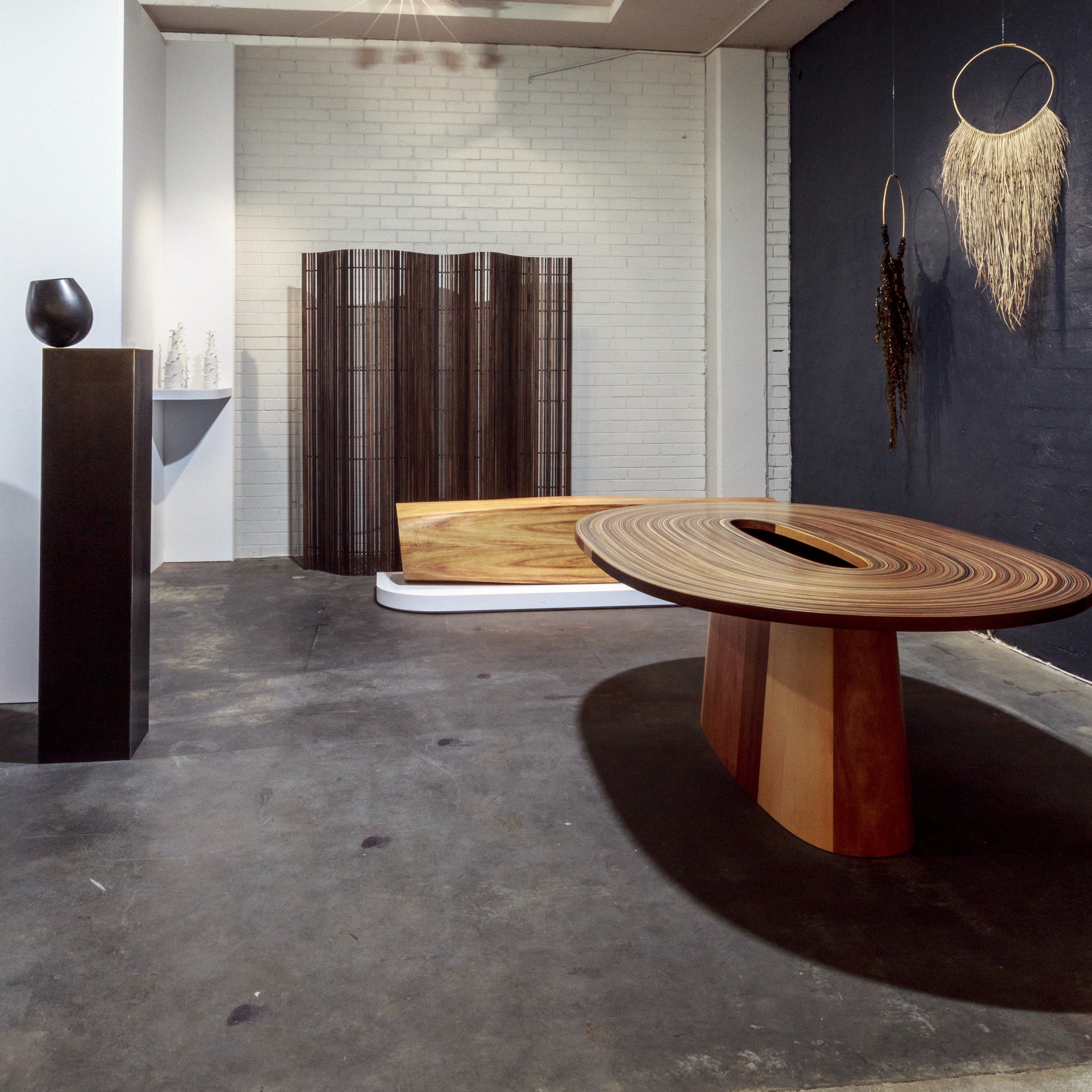
Melbourne Design Fair Installation; photo by Dean Lever
Michelle Boyde
Curator
Michelle is a designer and curator living in coastal Tasmania on the traditional homelands of the Pydarerme peoples.
With a Bachelor of Design from RMIT’s School of Architecture and Design, and background in contemporary dance, Michelle approaches design in a broad-thinking and cross-disciplinary way, with a unique and transferable skill set that spans fashion, interiors, object and installation.
Michelle has designed and curated extensively within the national arts industry for organisations such as Chunky Move Contemporary Dance Co., Mona, NGV, Bakehouse Studios, State of Design and Melbourne Fashion Week. With a recent focus in Tasmania’s boutique hospitality and tourism industries, she has worked as a designer and design consultant with clients including Sullivan’s Cove, Salty Dog Hotel, Eat Drink Mona, Dark Mofo’s Winter Feast, Riverfront Motel, Jo Cook Food, Taylor+Smith and eco-venture Spring Bay Mill on Tasmania’s rugged East Coast.
As well as her independent design work, Michelle is co-founder and curator for Unconscious Collective, a Tasmanian-based art collective founded in 2014. Her work with the group has been acquired by the Tasmanian Government Art Site Scheme as well as Menzies Institute for Medical Research, and has been presented by Dark Mofo, Mona Foma, Unconformity, Monash University and MPavilion. Projects include a social dreaming and sleeping event at a 1960s motel, sound sculptures using the dreams of primary school children, the design of hanging bio-sensor equipped pods for snoozing audience members, and a suite of cardiophonic furniture. The group's work has been supported by Australia Council for the Arts, Arts Tasmania, Tasmanian Regional Arts, Catalyst and NAVA, and received substantial acclaim in its short lifespan.
As a design mentor and educator, Michelle is currently working with Tasmanian aboriginal designer and cultural practitioner Michelle Maynard, as co-founder and facilitator of ‘Ya’rnin’ - Recovering Kinship through Design’, a 2-year pilot program with the goal of establishing informal fashion design training and employment pathways for Tasmanian aboriginal artists from across the island.
Michelle is also a current peer assessor for Arts Tasmania and Australia Council for the Arts, and held the role of Tasmanian editor for online Indo-Pacific focused journal Garland Magazine (2015-20).
Designer Profile
Website
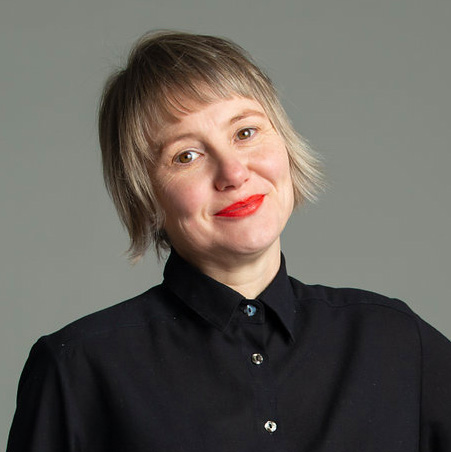
Michelle Boyde: photography by Ivett Dodd.
Acknowledgements
Design Tasmania acknowledges our supporters. We are assisted through Arts Tasmania by the Minister for the Arts, and by the Australian Government through the Australia Council for the Arts, its arts funding and advisory body.
Design Tasmania would like to thank Hydrowood, the Tasmanian Government and Lark Distillery for their generous support of ReCoil by Brodie Neill.